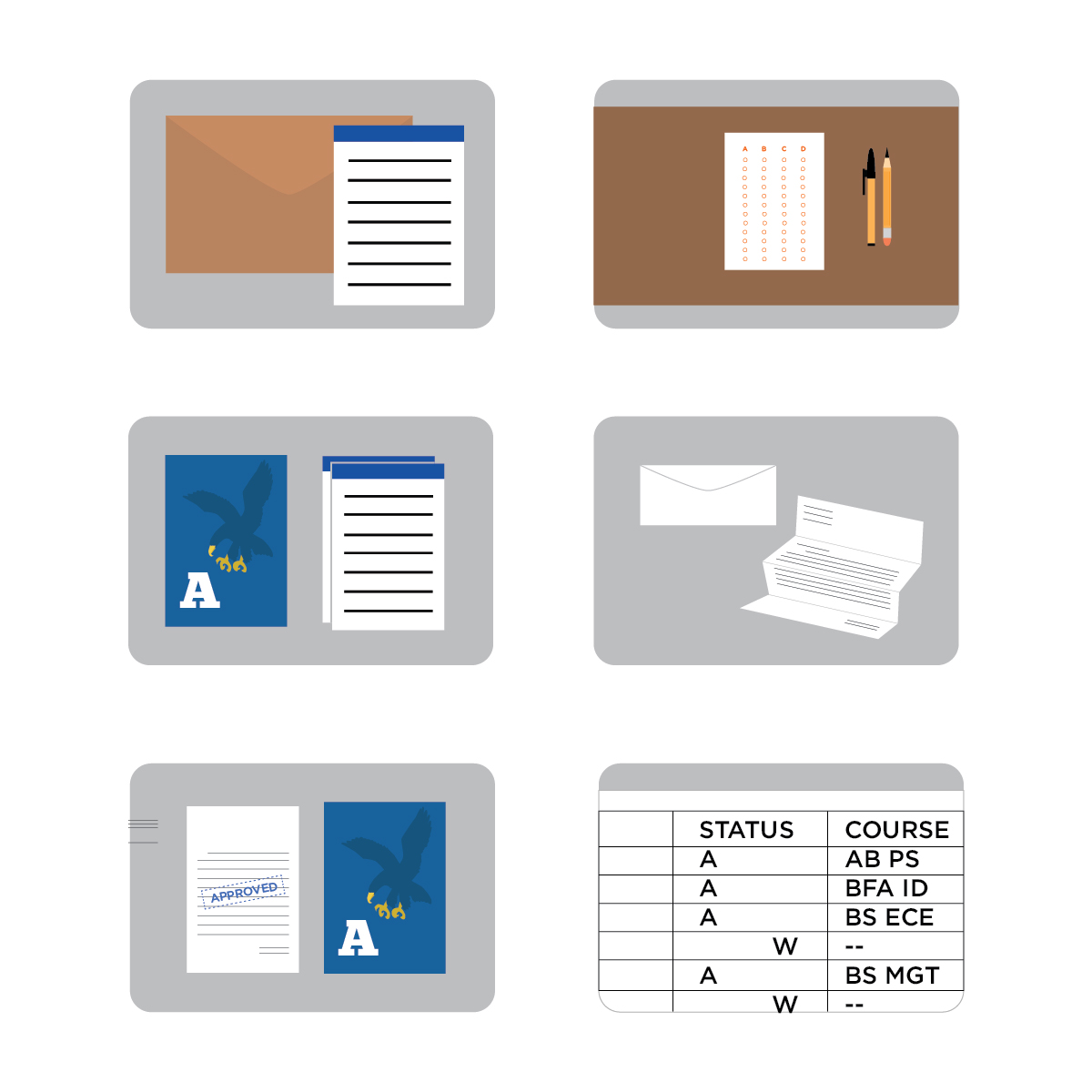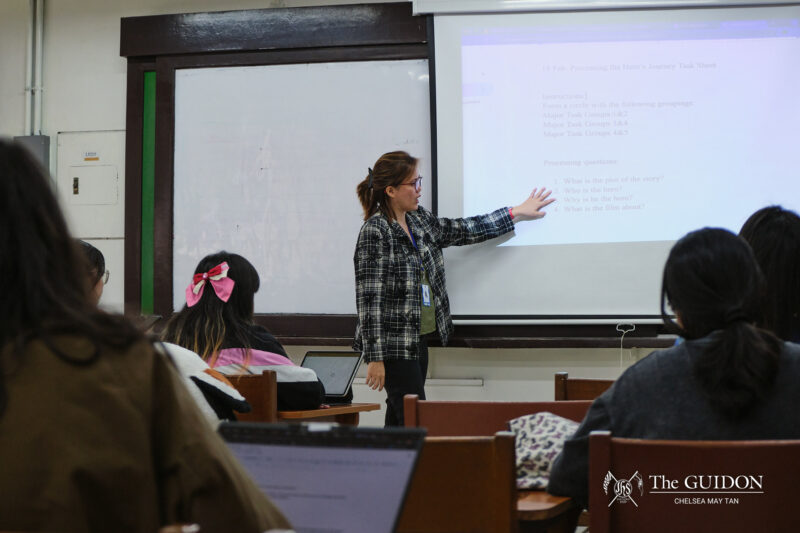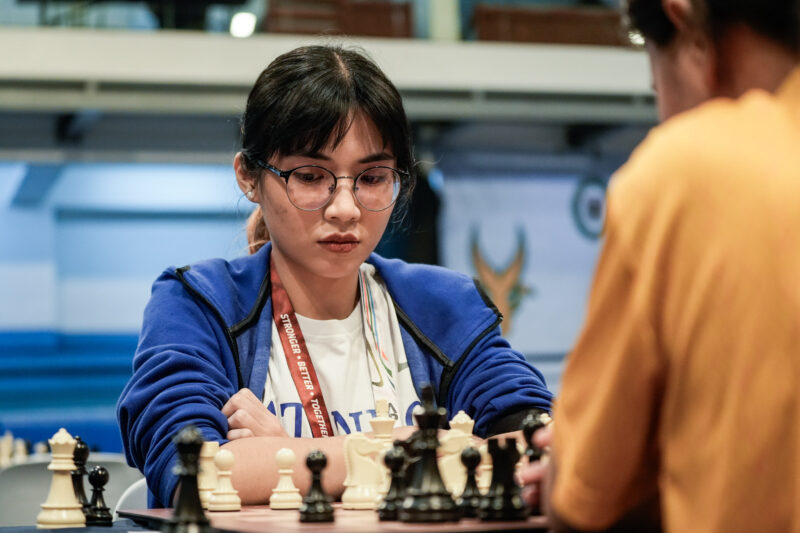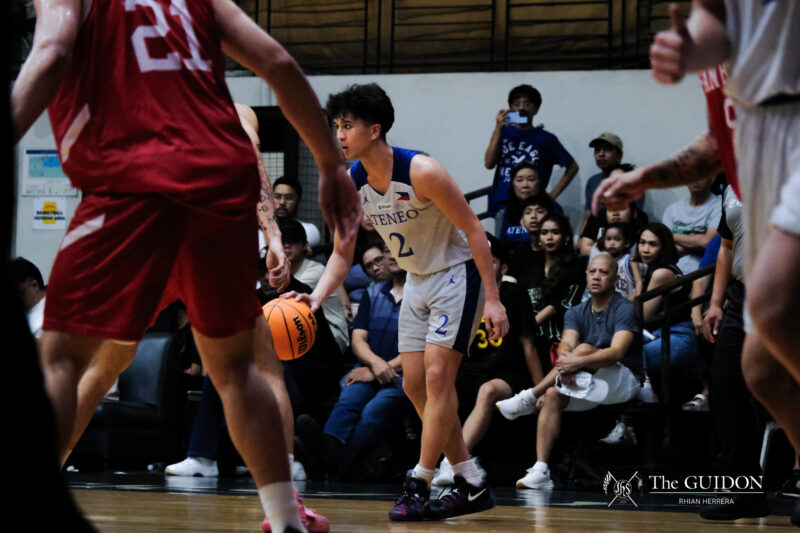All eyes land on her–she is tall, well built, chiseled. Her muscles strain as her legs move one after the other, as they are used to in the field. She walks into the classroom, trailing behind the stereotype she is fit into.
This is the world of student-athletes in the Ateneo. Their reputations precede them wherever they go.
There is no hiding the fact that gossip about student-athletes spill from the mouths of non-athletes. Rumors about their acceptance into the university are raised. Urban legends about a certain student-athlete repeating the same subject 11 times and another barely ever attending class litter hallways and cafeterias.
The acceptance of student-athletes into the Ateneo has always been surrounded by controversy due to the stereotype that they do badly in class. However, hardly any of the rumors are grounded in truth.
So what is the truth when it comes to how student-athletes get accepted into the university?
Official process
“There’s nothing off the record here,” Director of University Athletics Office Richard Palou opens. Then, he begins to explain the process that athletes go through to be accepted into the Ateneo.
Palou says there are scouts who recruit the athletes in high school. They evaluate the athletes’ performance and see if they merit a place on an Atenean team. If they think the athlete can benefit the Ateneo, the scouts offer him or her a spot on a team.
However, getting into the Ateneo is not that simple; recruitment is not the only hurdle that athletes must jump over. Palou explains that athletes go through the same undergraduate application process that regular students go through. They pass the same requirements and take the Ateneo College Entrance Test (ACET)–the same ACET, he clarifies. “Whatever the other students take, the athletes also take.”
Palou says, “It would help if [the athlete] automatically hit the cut-off mark [for the ACET]. If not, we appeal his case.” Should they have to appeal, the Office of Admissions and Aid (OAA) reviews an athlete’s ACET score. If his or her score indicate a potentially good academic performance in the Ateneo, then they accept him or her.
Women’s football player and information design junior Mia Catedrilla shares that some of the rookie players did not pass the ACET. However, their cases were appealed. The athletes had to write appeal letters stating their qualifications. Their coach also had to vouch for them by discussing his “level of experience” with them and “how well [an athlete] has played with him so far.” The OAA then deliberates the athlete’s case.
Palou also stresses that academic background plays a great role in an athlete’s acceptance into the Ateneo. In checking high school grades, he looks for grades of 80 and above.
In the case of transferees, Palou shares that the UAO does extensive background research, even going as far as checking with professors from an athlete’s previous university to know if he or she is also interested in school or if he or she is just looking to play. “If they’re just interested in playing, then we’d rather not have them because then they won’t make it here,” he says.
Ultimately, Palou says, the UAO is not the office that accepts the athletes–it is the OAA. The OAA was not available for an interview as of press time.
Getting in
Basketball Team B player and interdisciplinary studies freshman Alfonzo Gotladera is a transferee from De La Salle University where he had also played. He says, “After my last season there, I was planning to transfer already.”
He shares that in high school, the managers of the Ateneo Blue Eagles were already trying to recruit him but he chose to go to La Salle. During his last season there, he and the managers were in talks again. “It’s a blessing that they still offered me to play for Ateneo,” he says with a smile.
But being offered a place on the team did not translate to an easy way into the school. Gotladera says, “I submitted the [application] form. I took the ACET also. I think the process is pretty much the same. It’s just that [athletes are] approached.”
Gotladera confides that they were just five in a room when he took the ACET. However, they were not all athletes and it might have just been a special test date separate from the transferee ACET date.
Asked what his grade point average in De La Salle University was, he is visibly uncomfortable with providing an answer. When asked if he thought he passed the ACET, he answered, “I assume I got in [the Ateneo] because of talent.”
Another student-athlete, women’s volleyball player and management economics freshman Jamie Lavitoria, shares that she is a case of what Palou calls a “walk-in.”
“I went to Dominican University of California. [I wanted to transfer because] I just wanted a change. So I moved here.” She also says that her family friend had connections to the scouts who liked her portfolio and thought she had skill. They offered her a place on the team.
While Lavitoria is reluctant to share how exactly she got into the Ateneo, she emphasizes that “everyone must take the ACET.”
Catedrilla shares that wanting to get into the Ateneo also came before wanting to play for the university. She explains that her current coach was also her coach in high school and he recruited her for the Ateneo team. Besides getting recruited, she also actually passed the ACET. Though she submitted the same requirements as regular students, she did say that they had taken the transferee ACET, although they weren’t transferees. It’s the exact same test except less people take it.
The academic scoreboard
To ensure good academic performance, the UAO has a study hall for athletes. There are computers and tutors there to help the student-athletes with their lessons. Palou says the student-athletes under scholarship are required to spend four hours there each week. Catedrilla says that those who are on probation, in particular, are expected to go to the study hall.
Lavitoria shares that there was an instance when she didn’t fulfill her weekly four hours, and she was required to join one of the Ateneo’s fun runs as a consequence.
“[Some students in the Ateneo] label us as students who don’t take our studies seriously,” Gotladera says. “Here in Ateneo, we’re always reminded to take our studies seriously because if we take our studies for granted, we won’t be able to play.”
“I’m proud to say I’m doing good right now. The help that we get from the OAA and the tutors [in the study hall] are really a big help for us,” he adds.
It’s a similar case for Lavitoria.“I love volleyball but school’s my first priority,” she says. She also shares that her teammates are doing great academically.
Catedrilla, on the other hand, shares, “I have some teammates who reach [the Dean’s List], but I also have some who are just passing, trying to get by. They don’t mean to.”
Palou emphasizes that good academic performance is paramount to staying in the Ateneo. The quality point index (QPI) requirement for each year has to be met if a student-athlete wants to continue playing. He says that if an athlete’s grade falls below the QPI requirement, he or she is put under probation and is unable to play. If an athlete under probation fails to meet the QPI again, he or she is dismissed from the Ateneo.
Earning the Ateneo
“Would you say that all the athletes in the Ateneo deserve to be there academically?”
“I think so,” Palou answers with conviction.
Palou says that, years ago, then-President of the Ateneo Fr. Bienvenido Nebres, SJ allowed the UAO to recruit athletes, but they had to make sure that the athletes could handle the academic requirements of the Ateneo. “If we recruit an athlete, we want to see them graduate and get a degree,” Palou says.
“There are a lot of kinds of intelligence,” Gotladera says in a mix of English and Filipino. “For me, just because you don’t excel academically doesn’t mean you’re dumb. It depends on the person. Talent is another form of intelligence. I think Ateneo is a place for excellent people in general, not just excellent students.”
Editor’s note: No Basketball Team A players were available for interview.
The athlete’s game plan
 Illustration by Chelli V. Reyes
Illustration by Chelli V. Reyes
Step 1: Submit application form.
Step 2: Take the ACET.
Step 3: a. Pass the ACET.
b.Fail the ACET.
Step 4: a. Welcome to the Ateneo!
b. University Athletics Office appeals the athlete’s case. The athlete has to write a letter stating his or her qualifications. The athlete’s coach also has to vouch for him or her.
Step 5: b. The Office of Admissions and Aid (OAA) considers the appeal and reviews the athlete’s ACET scores.
Step 6: b. If the OAA approves the appeal, welcome to the Ateneo!






